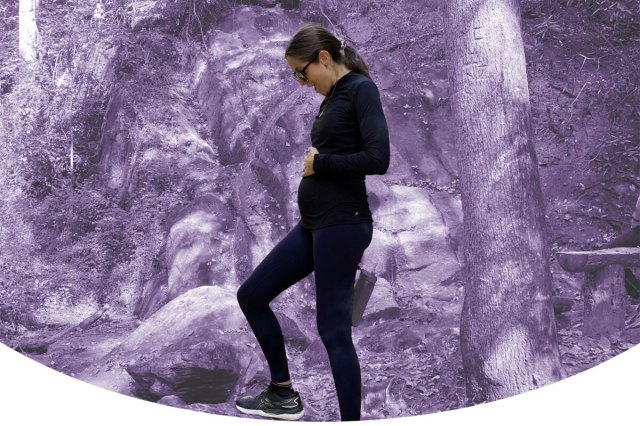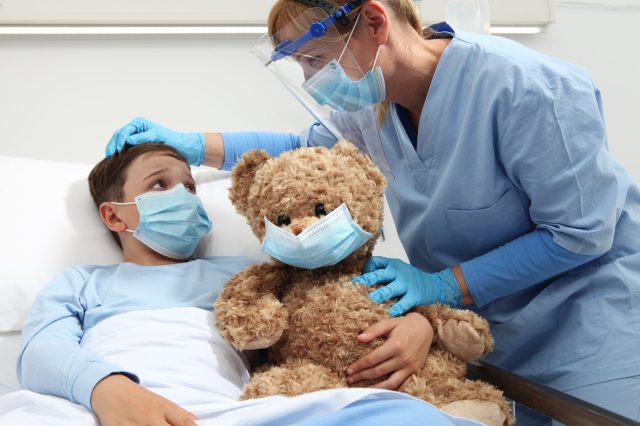I was lucky to be pregnant alongside one of my best friends. She was two weeks ahead of me and we shared a philosophy: we talk about everything. On any given day, the ping-pong match that became our text thread looked a little something like this:
Her: Where did you buy your compression socks? Your OB suggested them for flights, right?
Me: Do you think it’s bad I woke up on my back?
Her: New adds for our research list: delaying the first bath, and cord blood banking. Have you looked into either?
Me: How did you know it was baby hiccups when you felt them?
You better believe I hung on every word of her OB-GYN appointment recaps too, as I waited for my own. I wanted to know how did it go, what did you learn, and most importantly… what happens next?

As her 40-week mark moved closer and closer, I couldn’t shake the visual that she and I were standing at the top of a giant slide. Her, ready to push off and shout to me what the ride was like, as she soared towards the bottom.
I found having her as a guide for what was ahead to be calming, and made me feel like I was in “control” (cue the laughter, I know). I’m all about sharing what worked for me in the hopes it helps someone else, so here we go!
You may already be experiencing this, but the reality is, that as your pregnancy progresses, your OB-GYN appointments begin to feel more like drive-thrus than sit-downs. And that’s exactly around the time you’ll hear phrases like posterior placenta, newborn stem cell preservation, mucus plug, and foley bulb induction.
While these are new terms for the majority of us (and they sound intimidating), they’re not to be feared or rushed through. Your appointments are your appointments after all. So, from one new mom to the next, take your time. Command the room. If you need it, bring your partner, family member or friend as reinforcement. Most of all, ask every question.
To get you started, here’s a glimpse into the notes section of my phone organized by trimester. You’ll find topics to anticipate and questions to consider before your next OB-GYN appointment, no matter where you are in your pregnancy journey. Of course, pick and choose what feels appropriate for your situation.
We’re all on this ride together, friends—and I’ll be here waiting for you at the bottom of the slide.
First Trimester (0-13 Weeks)
The newness and fragility is palpable. This is a great time to gather questions as you wait for your first appointment and ultrasound.
- When should my partner and I get tested for our blood types?
- Are my prenatal vitamins giving me enough of what I need?
- Can I keep up my exercise routine throughout pregnancy?
- Are there foods I should avoid while pregnant?
- How do I choose pregnancy safe skincare?
- What should I be feeling during my first trimester?
- When do you recommend I tell my boss I’m pregnant?
Second Trimester (14-27 Weeks)
As you work through all the necessary blood work and testing, tackle some of the bigger questions around your delivery, and explore your preferences. This is a nice time for a babymoon too!
- What pregnancy classes should I take, and when should I take them?
- Is cramping a normal feeling while pregnant?
- Do I really have to sleep on my left side? Is it bad to sleep on your back while pregnant?
- Start thinking about birth intentions (I avoided the word “plan”, adds too much stress!) :
- What does a doula do, and do I want one?
- Who will be in the room?
- Review pain management options
- What ambiance do we want in the room (lights dimmed? music?)
- Do we want to do a circumcision?
- Should we save cord blood, and what are the benefits?
- Can you still fly in your second trimester?
- What can I eat before the glucose test?
Third Trimester (28-40 Weeks)
Gearing up for the homestretch! Expect more frequent doctor appointments as the weeks progress. This is your time to decide on your birth “intentions” and postpartum care.
- How long past my due date can I go before induction? Can you ask to be induced?
- Cervical exams during pregnancy—pros/cons? Are they elective?
- Reminder to decide on cord blood banking! When is our deadline, and what is the cord blood storage cost?
- What is delayed cord clamping? And why would you do it?
- What are signs your water broke? How long after do you wait at home if it does?
- What does a mucus plug look like?
- Do you have pediatrician recs? When do we make our first appointment?
- Start to freeze food! Any recommendations for the best postpartum meals?
- What is the transition phase of labor?
- What breast pump does my insurance cover? Should I get fitted for a breast pump now?
While there is a lot to consider (clearly!), I hope having this little list in your back pocket lets you feel prepared for your next OB-GYN appointment.
To learn more about Cord Blood Banking, and how to order a collection kit before heading to the delivery room, visit our friends at Cord Blood Registry®(CBR®).
They’re sharing promo code ‘OWTA’ with Tinybeans families to save 45% on the CBR Collection Kit!


















